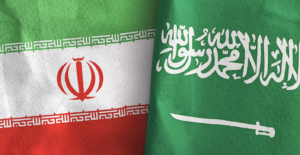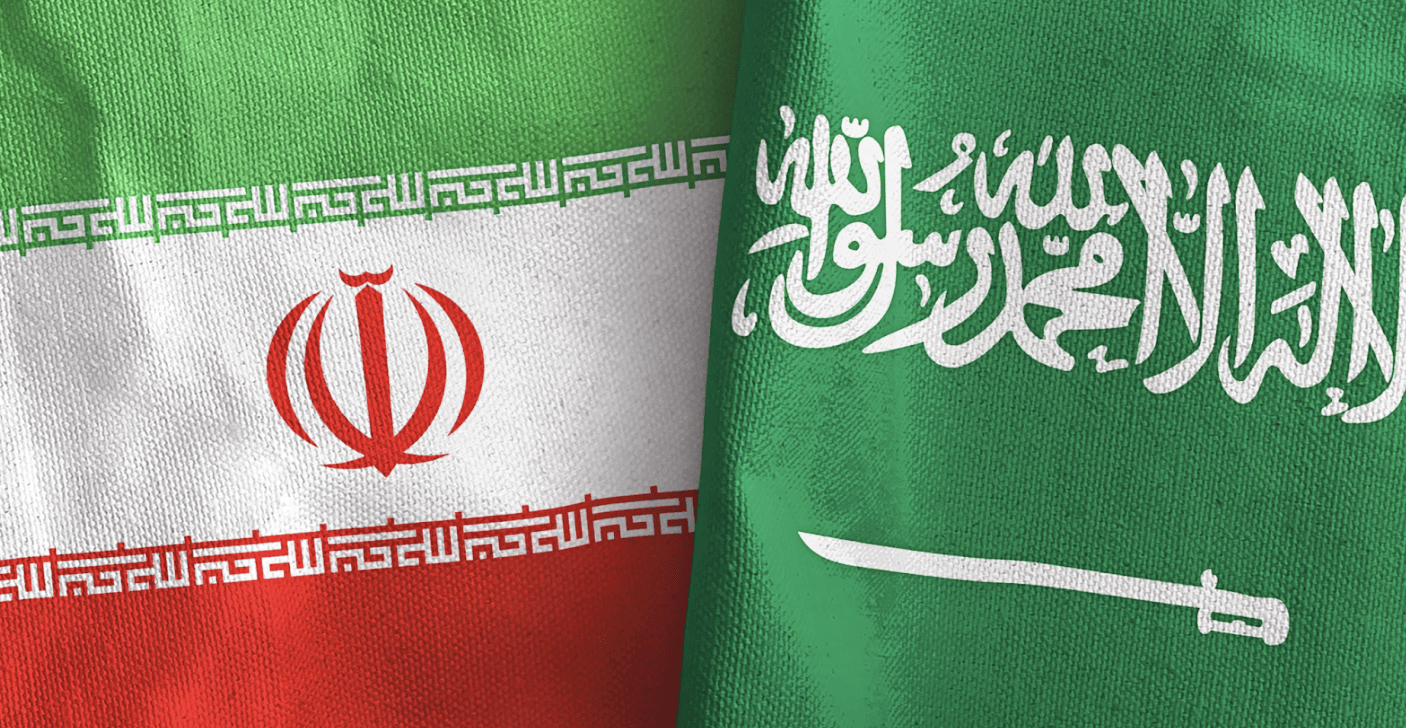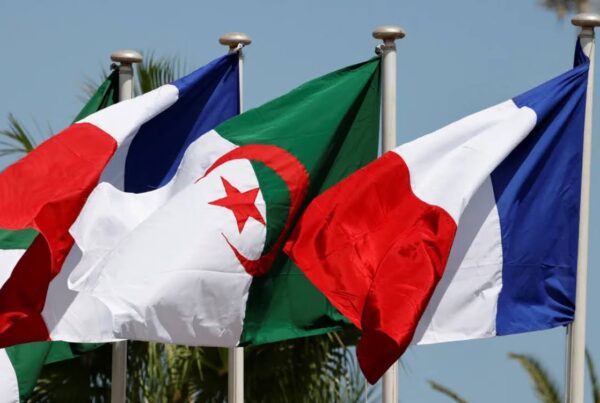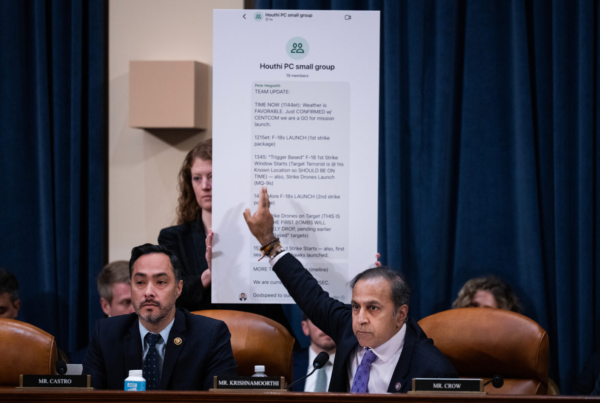Tehran, 1978 – University students gather in the streets chanting “death to the Shah,” marching with their right fists in the air in protest. They stream through Tehran’s streets in thousands, sweeping up with them observing citizens caught in the momentum of the movement. Modernization will not happen in Iran, they argue. Iran will not be exploited by corrupt Western influences to the detriment of their population. Little did the protestors know, the revolution they incited would usher in decades of rivalry and unrest beyond their borders, ultimately plaguing the Middle East with unrelenting violence.
In 1979, these Iranian popular uprisings supplanted Shah Pahlavi, the liberal, Western-leaning ruler of Iran, in favor of Ayatollah Khomeini, whose mission was to make Iran a leading power through Shia Islam. Seeing strategic opportunities and sensing challenges to its power, Saudi Arabia designated itself as the leader of the Muslim world against Iran in 1979, and the two countries have sparred ever since.

But why is there such tension between Iran and Saudi Arabia? An oversimplified explanation of the two countries’ tumultuous history since 1979 would attribute their dispute to the Sunni/Shia Muslim divide, a conflict that began after the prophet Mohammed’s death, when his followers disagreed on who would succeed him as Caliph. This contention led to the division into two denominations: Shia and Sunni Muslims, resulting in a series of violent conflicts for fourteen hundred years. Today, Iran is the largest Shia Muslim power, while Saudi Arabia is the preeminent Sunni Muslim power. For both countries, their religious affiliations have become core to their political legitimacy, both internally and abroad. For instance, Saudi Arabia’s possession of Mecca and Medina legitimizes its standing as a global leader of Islam. In Iran, the Ayatollah’s ‘divine’ standing as Supreme Leader makes Iran’s citizens more supportive of their government’s decisions. As a result of their religious convictions, however, Iran and Saudi Arabia both seek to spread their beliefs to the rest of the Middle East, hence their active engagement in many local religious conflicts such as in Yemen.
When Khomeini came to power, he moved to establish Iran as a key leader of the Islamic world. To do so, Khomeini pointed to persistent Western interference in the region for coveted oil resources, which the Saudis benefit from to the detriment of all other countries. Iran’s case was tempting to many weak leaders, like Bashar al-Assad, who sought scapegoats for their countries’ unresolvable economic turmoil and lack of autonomy, but Iran lacked the financial resources to support regional leaders in the way Saudi Arabia could. Thus, Iran was largely unable to gather strategic political alliances in the region, despite its appeal to local leaders in the 1980s and early 1990s. Nonetheless, apiring reformers in the region, such as fundamentalist groups, deprived of political power, were eager to cultivate alliances with Iran to raise their political standing. Tehran therefore resorted to more subversive techniques, such as sponsoring paramilitary groups and revolutionaries who sought to overthrow Western-appeasing leaders. At the same time, they backed disputed leaders like al-Assad who had fallen out of Western favor, capitalizing on these situations to prove their ‘anti-Western’ commitments. The Saudis, still wary of the Iranian threat, did all they could to inhibit Iran’s tactics, which aggravated pre-existing violence in the Middle East, such as in Yemen, Lebanon, Palestine, and Iraq.
Recently, economic volatility in the Middle East has compounded local political rivalries, creating fertile grounds for armed conflicts. These growing tensions lend Saudi Arabia and Iran a valuable opportunity to pursue their economic and political interests. Since the Arab Spring in 2011, the Middle East has been haunted by a decade of violence, and Saudi Arabia and Iran sit on opposite sides of these conflicts. For Iran, strategic alliances with other Middle Eastern countries can prove crucial for obtaining goods, supplies, and a consumer market that will reduce some of their economic struggles from decades of Western sanctions. As for Saudi Arabia, a country whose economy is rooted in oil production, strategic partnerships would allow economic diversification.
What are the consequences of this rivalry today? Iran has backed President Bashar al-Assad’s regime in Syria since 2011. Hoping to have a new, pro-Saudi Syrian regime, Saudi Arabia has supported Syrian rebels, but as the costliness increases with no resolution in sight, the Saudis have progressively retracted their aid. The Syrian conflict would perhaps have been solved very quickly without foreign meddling. Instead, due to foreign intervention (and not just from Iran and Saudi Arabia), the Syrian civil war has become an internationalized conflict at the expense of Syria’s civilian population, around 13 million of whom were displaced due to the war.
Iraq is also an interesting proxy-conflict case study because of its long-standing rivalry with Iran. Since the fall of Saddam Hussein’s regime in 2003, international actors have increasingly inserted themselves into Iraqi affairs. After the Second Gulf War, Iran has presented itself to Iraq as its altruistic Shia neighbor and offers much support for Iraqi political parties as well as Shia paramilitary groups. In return, Tehran has held significant influence over political matters in Iraq. Nonetheless, the Iraqi population, whose self-pride and national identity remain core to their interactions with neighboring countries, reject Iranian meddling, and Saudi Arabian support has trickled into the country. International spectators see Iraq as a future place of Iranian-Saudi tensions should the Iraqi people reject the Iranian-sponsored government more vocally.
Finally, when it comes to Yemen, the rivalry becomes more violent and more controversial. Yemen represents a textbook example of geopolitical rivalries capitalizing on regional instability to assert power. Saudi Arabia has led an internationally backed coalition against the Houthi rebels since 2015 to restore its southern neighbor’s pro-Saudi government. Iran, in retaliation, supports the Houthis directly and indirectly through their sponsorship of the Lebanese terrorist organization Hezbollah. Ever since Iran’s involvement in Yemen, Saudi Arabia has developed a national narrative that the conflict in Yemen is actually a fight against Iran; striking a Houthi target equates to striking an Iranian one. This mindset poisons most power disputes in the region, as Saudi Arabia assumes Iranian involvement at every turn and reacts accordingly. As far as the Saudis and the Iranians are concerned, the Yemen conflict has no resolution in sight, leaving instead a grave humanitarian crisis in its wake.
Overall, the Iranian-Saudi rivalry contributes significantly to the Middle East’s current instability. However, their friction itself is another, more historical, proxy-conflict that dates back to the end of WW2: the Russo-American rivalry. Russia’s increasing backing for Iran mirrors the US’s unrelenting support for Saudi Arabia, and these actors have not hesitated to voice their perspectives in multiple unraveling conflicts in the region. The Middle East’s situation therefore raises an essential question for modern geopolitics: has the Cold War truly ended? Or has it just been transposed from Europe to the Middle East, roping in new countries, new objectives, and new tragedies as it evolved?
Other posts that may interest you:
- The Trouble with ‘Ecocide’
- Carbon dioxide removal – hit or miss?
- Local Victories for Turkish Opposition — A Sign of Hope?
- Are France and Japan a Mismatch Made in Heaven?
- A Reflection on Dark Tourism
Discover more from The Sundial Press
Subscribe to get the latest posts sent to your email.





